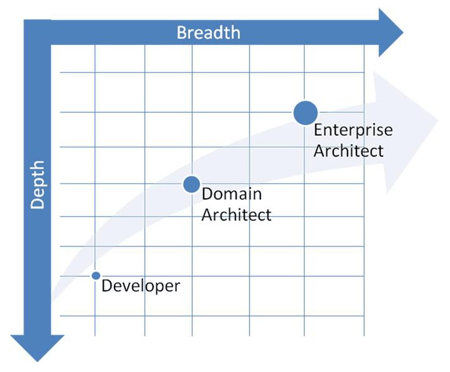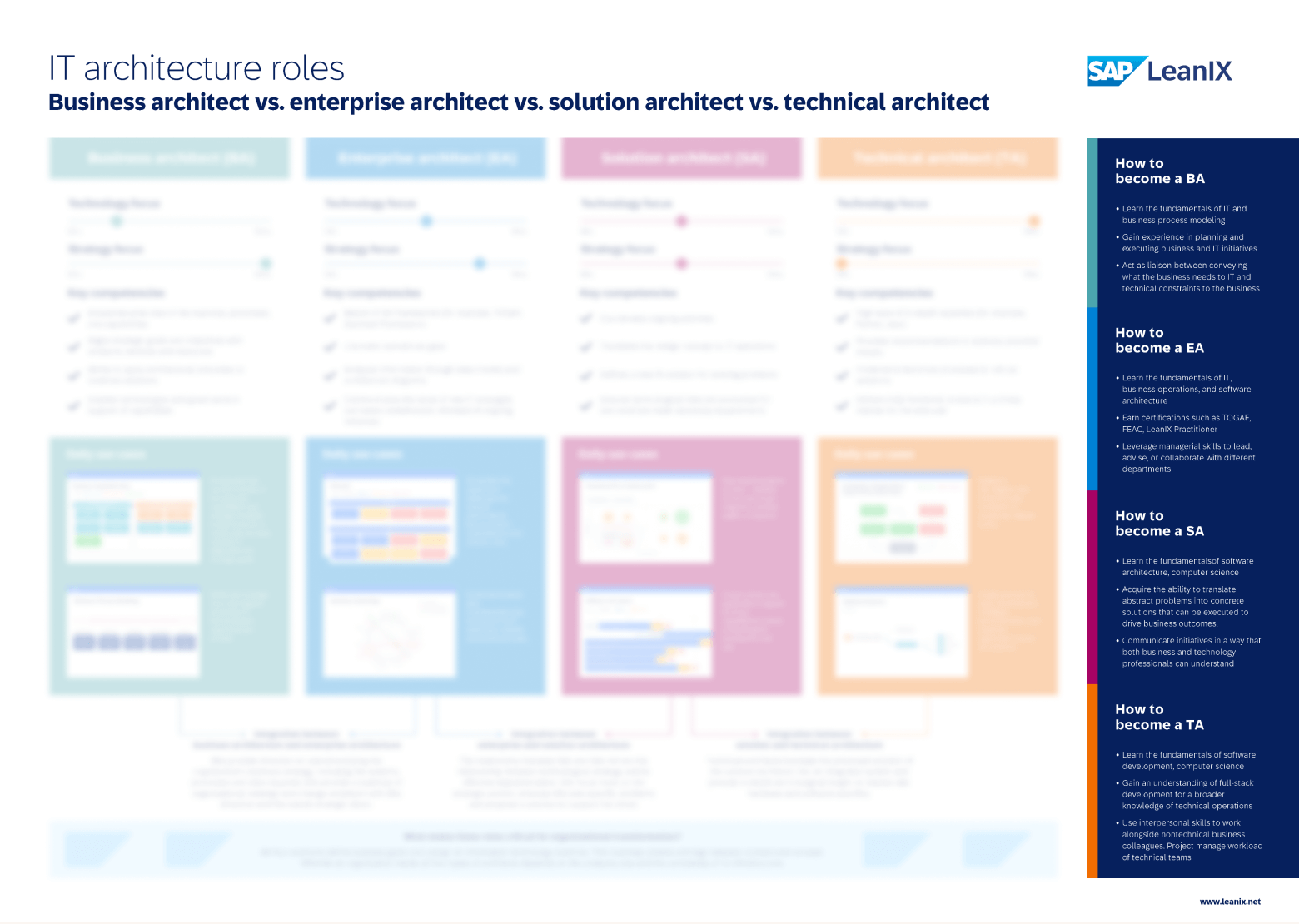Introduction
In the intricate realm of IT, IT architects and other professionals wear many hats, each contributing uniquely to the digital transformation journey of organizations.
This comprehensive guide aims to demystify the roles of the enterprise architect, domain architect, and developer, emphasizing their significance, distinctions, and interdependencies.
📚 Related: What is the difference between Enterprise Architect vs. Solution Architect vs. Technical Architect?
What does an enterprise architect do?
The enterprise architect is the strategic visionary of an organization's IT landscape. They are responsible for ensuring that the business's objectives, strategies, and processes are seamlessly aligned with its technological infrastructure.
Their role is not just limited to understanding current architectural blueprints but also involves forecasting future trends, and ensuring that the organization remains agile and adaptive.
By creating a bridge between business needs and IT solutions, they ensure that decisions made are scalable, sustainable, and in line with the company's growth trajectory.
📚 Related: Who is a Business Architect?
What does a domain architect do?
Domain architects are the deep divers of specific technological areas. Whether it's 'Data Services,' 'Process Design,' or 'Integration Services,' their expertise lies in their chosen domain.
Unlike the enterprise architect who looks at the broader picture, the domain architect focuses on the nuances, intricacies, and challenges of their specific area.
Their role is pivotal in ensuring that domain-specific problems are addressed with precision, efficiency, and innovation.
📚 Related: Who is a Technical Architect?
What does a developer do?
Developers are the builders of the digital world. They take the visions of architects and turn them into tangible solutions. From designing intricate systems to programming applications that millions might use, their role is hands-on and detail-oriented.
They work closely with the majority of IT architects, such as enterprise and domain architects. This way they ensure that the technical solutions developed are in line with the strategic vision and domain-specific requirements.





/EN-WP-EA-Tomorrow-Resource_Page_Thumbnail.png?width=260&height=171&name=EN-WP-EA-Tomorrow-Resource_Page_Thumbnail.png)
/EN-TopStakeholderQuestions-Poster_Resource_Page_Thumbnail.png?width=260&height=171&name=EN-TopStakeholderQuestions-Poster_Resource_Page_Thumbnail.png)

